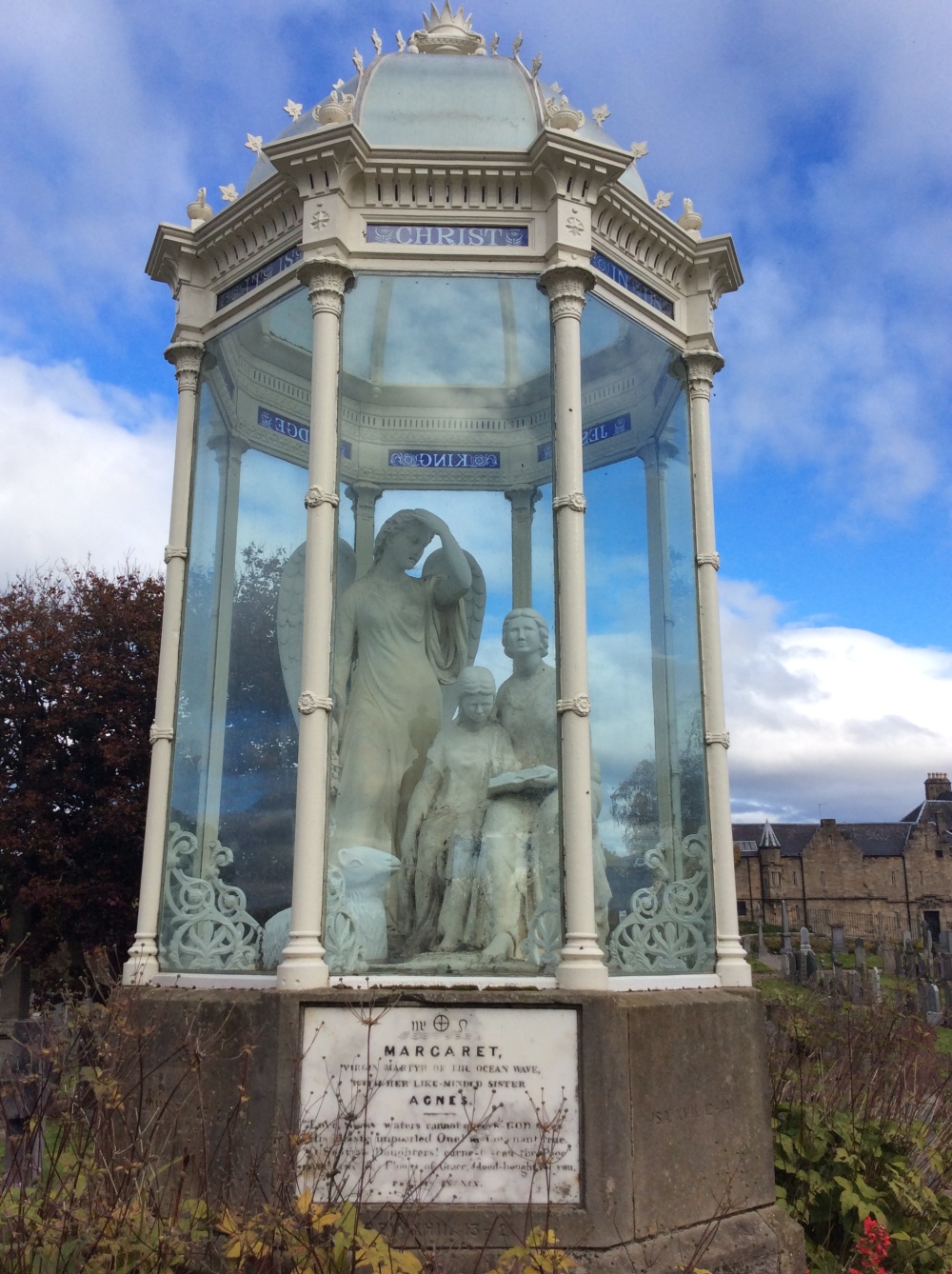 Stirling Castle cemetery – who were the virgin martyrs ?
Stirling Castle cemetery – who were the virgin martyrs ?
Here, near the summit, is a most beautiful group of statuary, of lifesize and inclosed in glass. The marble is of the purest. white, and the work is evidently of a master hand. There are two young women, fair daughters of Scotland, and by them, with overshadowing wings, is an angel, beautiful and tall. The girls are Margaret and Agnes Wilson, the virgin martyrs, who, in the dark and bloody days of persecution, gave up their lives for the love of Jesus, their Savior. Away down in the bed of the Solway, when the tide had ebbed, the stakes were driven, to which these maidens were bound. They had the offer of life, if they would renounce their faith; but they were firm as the hills of their own native land. There were old friends who urged them to give up their ways, and conform to the law; I)but they heard the voice of God, and dared to obey. But the moments were short and few, for the relentless tide would not wait; it reached the stake, it touched the feet of the helpless victims; it was chill and cold, and human flesh could but shiver; and the rude executioners, as they mounted their horses to ride away, gave them one more chance for life, and this, too, was rejected, and they were left to their fate.
St Columba
So who was St. Columba? Born of royal blood in 521 AD in Ireland, he was the grandson of the Irish King Niall. He left Ireland for Scotland not as a missionary but as an act of self-imposed penance for a bloody mess he had caused at home. He had upset the king of Ireland by refusing to hand over a copy of the Gospels he had illegally copied, this led to a pitched battle in which Columba’s warrior family prevailed. Full of remorse for his actions and the deaths he had ultimately caused he fled, finally setting on Iona as the first place he found from where he couldn’t see his native Ireland. One of the features on the island is even called “The Hill with its back to Ireland”.
St. Columba however, was not the shy retiring type and set about building Iona’s original abbey from clay and wood. In this endeavour he displayed some strange idiosyncrasies, including banishing women and cows from the island, claiming that “where there is a cow there is a woman, and where there is a woman there is mischief”. The abbey builders had to leave their wives and daughters on the nearby Eilean nam Ban (Woman’s Island). Stranger still, he also banished frogs and snakes from Iona. How he accomplished this feat is not as well documented.
The strangest claim of all however is that Columba was prevented from completing the building of the original chapel until a living person had been buried in the foundations. His friend Oran volunteered for the job and was duly buried. It is said that Columba later requested that Oran’s face to be uncovered so he could bid a final farewell to his friend. Oran’s face was uncovered and he was found to be still alive but uttering such blasphemous descriptions of Heaven and Hell that Columbus ordered that he be covered up immediately !
The Kelpies
A SIGHT YOU WON’T FORGET
The Kelpies, designed by Scottish sculptor Andy Scott, and they’re the largest pair of equine sculptures in the world.Towering above the Forth & Clyde Canal, The Kelpies are a feat of engineering, each made with 300 tonnes of structural steel, and are a monumental tribute to the horse power heritage that was vital to the early industries of central Scotland.
The Kelpies are a personification of local and national equine history, of the lost industries of Scotland, a symbol of modern Scotland – proud and majestic, of the people and the land. As a canal structure they will partner the iconic Falkirk Wheel, and echo its grandeur. They stand testament to the achievements of the past, a tribute to artisanship and engineering and a proud declaration of intent for the future of Scotland.”
 Who the Ecclefechan was Carlyle ?
Who the Ecclefechan was Carlyle ?
A writer too intellectual for me to understand so that’s all I will say !
Who was Eilean Donan ?
So it turns out not to be a person but the name Eilean Donan, means island of Donan and is most probably called after the 6th century Irish Saint, Bishop Donan who came to Scotland around 580 AD. There are several churches dedicated to Donan in the area and it is likely that he formed a small cell or community on the island during the late 7th century.
















